The beetle fauna of the London area is about as rich as anywhere in the British Isles and more so than most places. The variety of habitats, semi-natural and man-made, the parks with veteran trees and the capital as point of introduction for foreign species, contribute towards this diversity. Some of the country’s best sites for saproxylic (dead wood feeding) beetles lie in London’s suburban parks.
Pre-eminent among London’s beetles is the Stag Beetle (Lucanus cervus) for which south London is not only a British stronghold but also a European one. The larvae feed in rotting tree stumps for 3 or 4 years before pupating in autumn to spend the winter within the tree before emerging as an adult in June. Suburban streets can the best places to spot one especially when in flight at dusk. The Lesser Stag Beetle (Dorcus parallelopipedus) is more common and widespread and occurs in some parts of inner London.
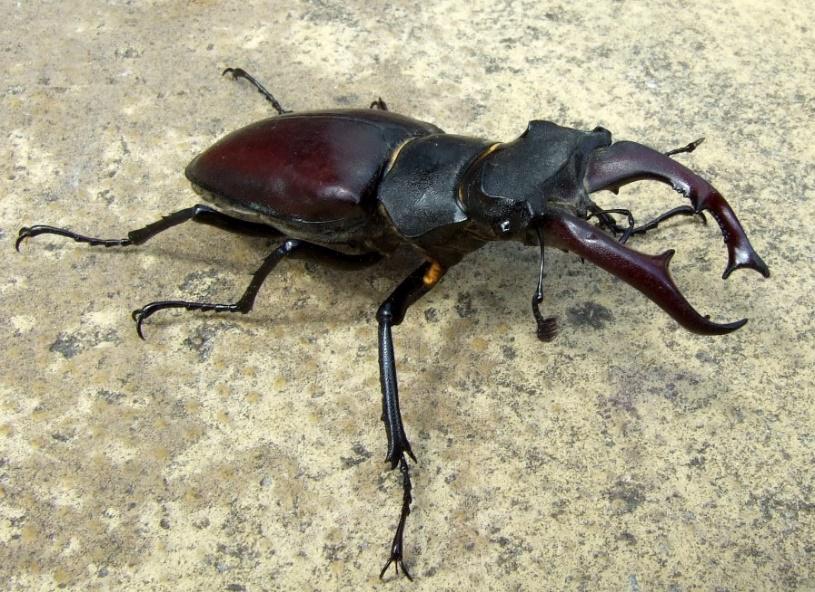
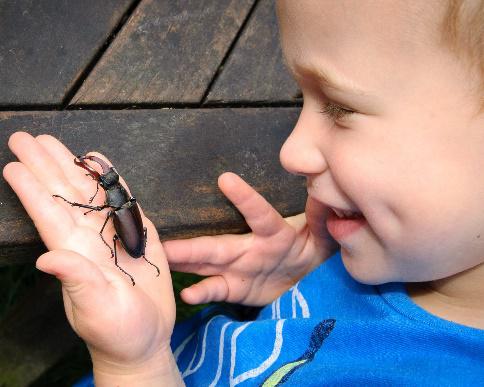
Male Stag Beetle ©Stuart Cole
Belonging to the same superfamily as the stag beetles are the chafers and dung beetles. The conspicuous metallic green Rose Chafer (Cetonia aurata) is a species that has become much more common in London’s outer suburbs in recent years. It is most likely to be seen on the flowers of umbellifers from May to July. The larvae live in compost heaps and decaying wood.
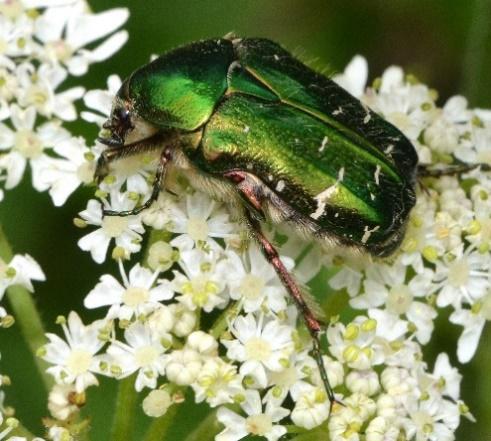
Rose Chafer ©Stuart Cole
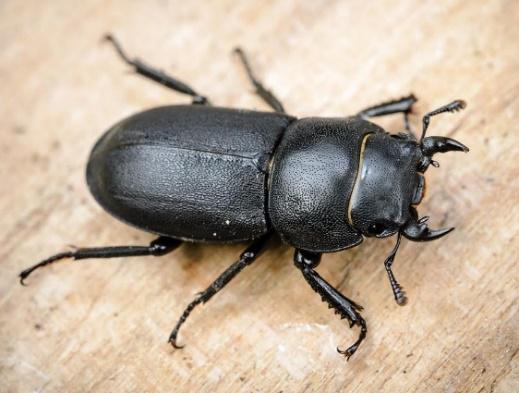
Lesser Stag Beetle ©Stuart Cole
The most distinctive of the dung beetles is the Minator Beetle, the male of which possesses prominent forward pointing horns on the thorax. This prefers sandy soil in which to excavate the burrows where rabbit or fallow deer dropping are stored for the larvae. It can be found in the deer parks in south-west London and at the LNHS survey site at Bookham Common in Surrey. Another horned dung beetle is the male of Onthophagus coenobita which prefers horse dung and may be found in suburban parks and paddocks.
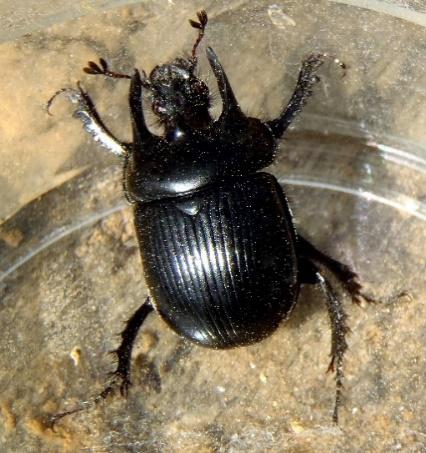
male Minator Beetle ©Stuart Cole
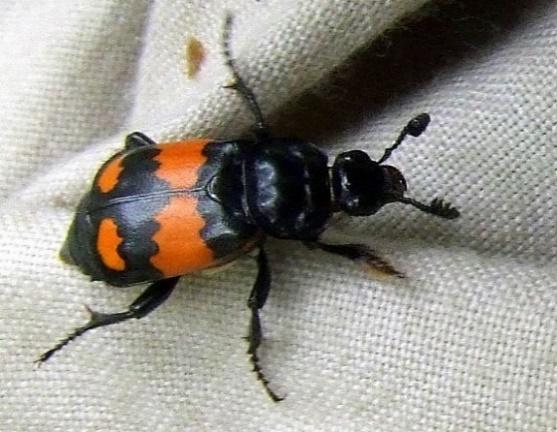
Nicrophorus vespilloides ©Stuart Cole
The carrion beetle family Silphidae has some large red and black insects commonly called burying beetles. The species most frequently found around London is Nicrophorus vespilloides which feeds not only in the carcasses of small animals but also rotting fungi; the larvae feed on carrion sunk into the soil by the adults.
The Staphylinidae are a large family of elongated beetles characterised by their short elytra and flexible abdomen. They occur in a great variety of situations including dung, carrion, ant and hornet nests and the mud of salt and freshwater marshes. The largest of the nearly 1,000 British species and one that is very common around London is the Devil’s Coach-horse (Ocypus olens) which may be found beneath logs and rocks in gardens. The larvae are predacious.
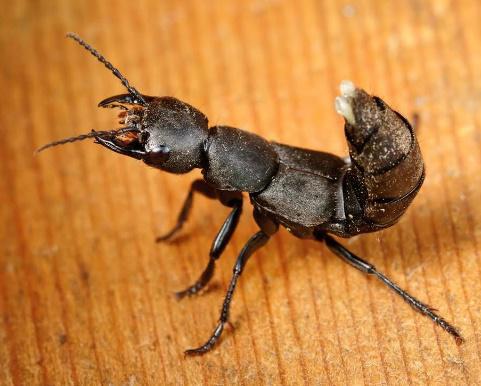
Devil’s Coach-horse ©Mick Massie
A striking beetle, another that is more frequent now than in the 1960s, is the Black-headed Cardinal Beetle (Pyrochroa coccinea). It is about 17mm long and almost entirely scarlet. The flattish larvae live under bark of dead trees.

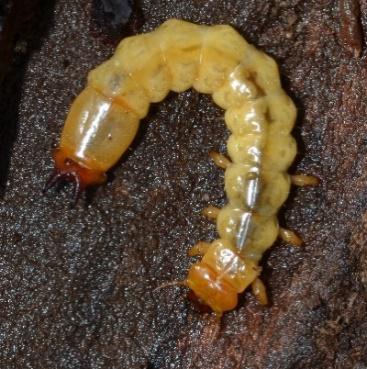
Black-headed Cardinal Beetle and larva ©Stuart Cole
The Rusty Click Beetle (Elater ferrugineus), the largest British member of the Elateridae, was, until recently, considered one of Britains rarest beetles, possibly restricted to Windsor Forest. That is until an artificial scent was concocted that mimics the female beetle’s sex pheromone. Using lures containing the scent entomologists have found that the species is actually resident in many localities in and around London, including Hampton, Kew Gardens and even Hyde Park in central London. E. ferrugineus preys on the larvae of other rotten-wood feeding beetles.
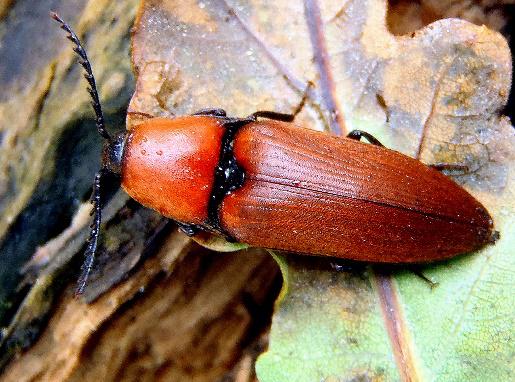
Rusty Click Beetle ©Stuart Cole
The attractive metallic green Oedemera nobilis is now much more frequently seen than in the past. The adults feed on flower pollen in summer. The males have enlarged thighs on the hind legs and thus are easily distinguished from the females which lack this feature.
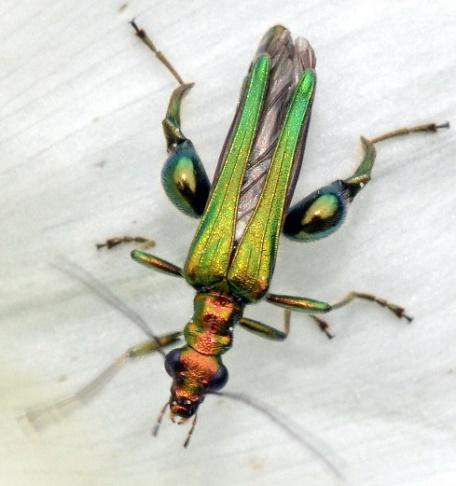
male Oedemera nobilis ©Stuart Cole
Among our largest beetles are the longhorns of the family Cerambycidae. Britain has relatively few species of these but there are some such as the elegant Rutpela maculata that can be found not uncommonly on flowers in the London area including the suburbs. Agapanthia villosoviridescens is distinctive for its banded antennae and pale blue legs. The larvae feed inside the stems of umbellifers such as hogweed. The biggest of Britain’s longhorns is the Tanner Beetle (Prionus coriarius) which grows up to 4.5 cms. and lives in ancient oaks in Richmond Park in the south-west of the capital.
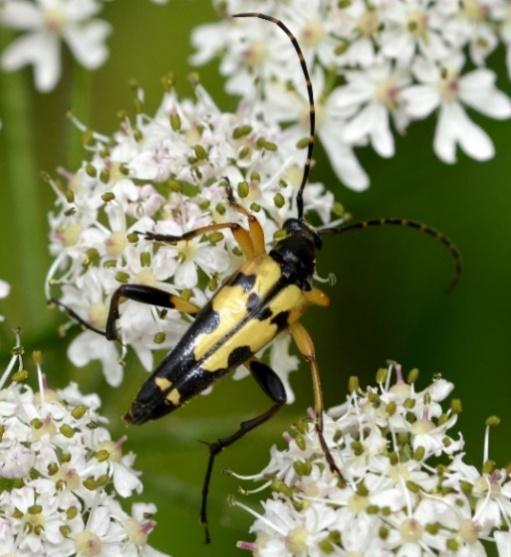
Rutpela maculata ©Stuart Cole
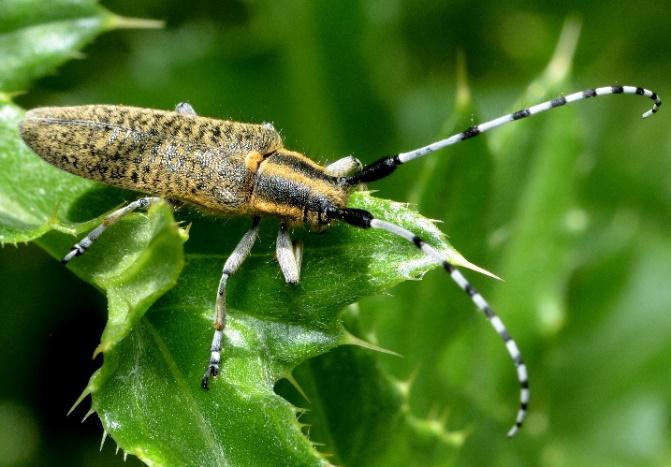
Agapanthia villosoviridescens ©Stuart Cole
Although they look very unlike the longhorns, the leaf beetles (Chrysomelidae) belong to the same superfamily. Wherever water mint is allowed to grow at the edge of ponds and lakes you are quite likely to come across the big, bright metallic green, Mint Leaf Beetle (Chrysolina herbacea). Both adults and the black grubs feed on the aromatic leaves. Another large and conspicuous species is Chrysomela populi which lives on the foliage of aspens as well as poplars.
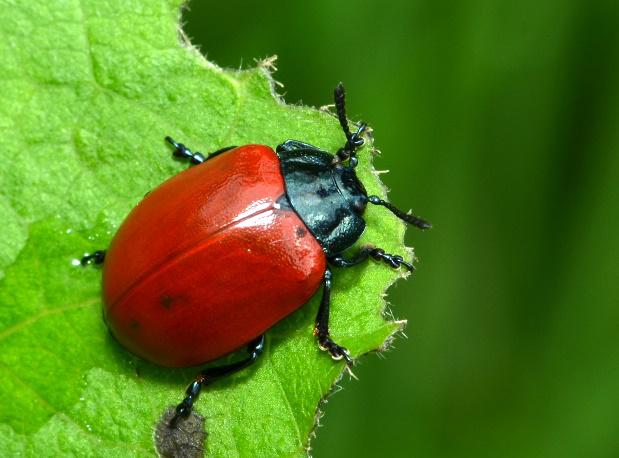
Chrysomela populi
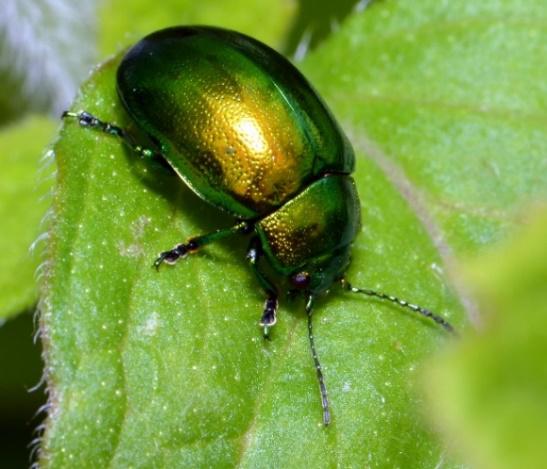
Chrysolina herbacea
Stuart Cole

